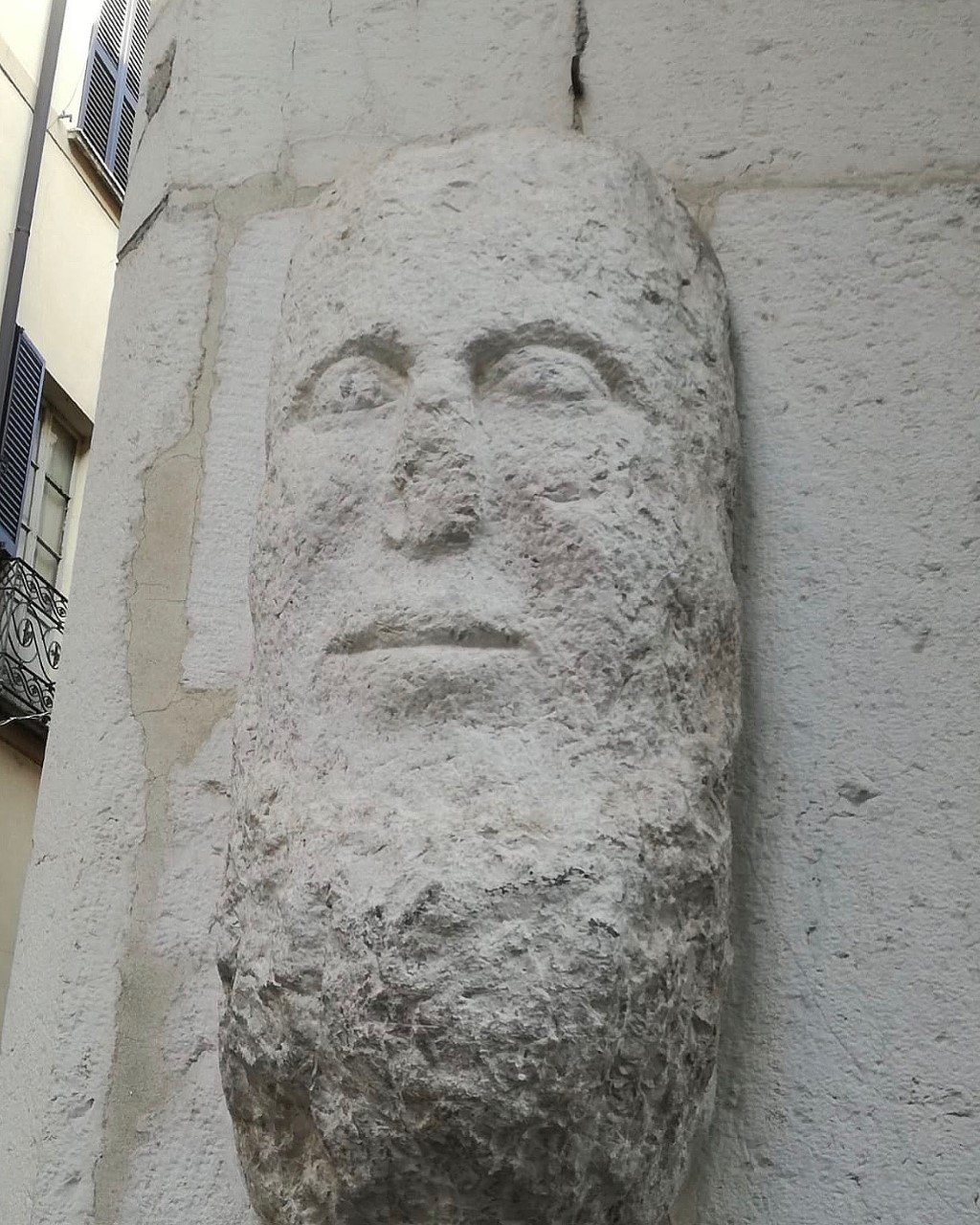
Brescia – The Mostasù dèle Cosére
Walking in the historical center of Brescia, walled up at the corner between corso Goffredo Mameli and contrada delle Cossere, one encounters a real curiosity: the “Mostasù dèle Cosére”. What is literally the “faccione delle Cossere” in Brescian dialect, is an ancient relief.
The relief reproduces a big head, or a big mask, with a long beard and a chiseled nose. The features of the face show a serious and calm expression. But, on the whole, even considering the wear and tear of the time, the sculpture appears definitely a never completed sketch. Its real origins are not known, nor the real origin, nor the events that interested the sculpture in the centuries, in particular the one that brought to the removal of the nose, but many are the stories that circulate about it.
The most famous one is about the chiseled nose. The traditional legend refers to the medieval fights between Guelphs and Ghibellines and to the descent of Emperor Henry VII to Italy in 1311. To the expulsion of the Ghibellines from Brescia by the Guelphs, in 1311, Arrigo VII put the city under siege. So, after having conquered it, he would have sworn to destroy the walls and cut off the noses of all citizens.
His fury would be appeased only thanks to the intervention of the papal legate Luca Fieschi and the payment of a heavy bounty. The Emperor would have been content to cut off the noses of all the statues. The Mostasù did not escape the imperial disfigurement and remains as a testimony of the ferocious episode.
A variation of the legend, however, would have it that Arrigo VII, after entering the city at the end of the siege, would not have found any citizen to realize his oath, being all the citizenship hidden to escape him, and only at this point, asked for advice to Fieschi, would have fallen back on the noses of the statues.
Did you like this curiosity? If you want to read more, about thousands of cities, download Secret Maps!
And if you want to listen to something interesting, try the first Travel Podcast Platform. Try Loquis!

